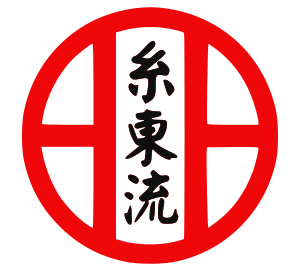1. Introduction and foundation of Shito-Ryu
Shito-Ryu is one of the main styles of karate practiced in the world today. Its name is derived from the stage names of two Okinawan karate masters, Ankō Itosu (Shi) and Kanryō Higashionna (To), who strongly influenced the style’s founder, Kenwa Mabuni.
Born in 1889 in Shuri, Okinawa, Mabuni was a devoted student of the martial arts from an early age. He began learning Shuri-te, a form of karate indigenous to Okinawa, under the tutelage of Itosu. Later, he also studied Naha-te, another form of Okinawan karate, with Higashionna. Mabuni created Shito-Ryu by fusing elements of both styles, with the aim of preserving traditional Okinawan techniques and katas while developing a system adapted to modern needs.
2. Shito-Ryu philosophy
The Shito-Ryu philosophy is based on the notion of balance and harmony. Mabuni believed that karate should be a complete practice, integrating both hard (Go) and soft (Ju) techniques. This is why Shito-Ryu is known for its technical diversity, with a wide range of striking, blocking, throwing and grappling techniques.
In addition, Shito-Ryu emphasizes character building and ethics. Like many other karate styles, Shito-Ryu adheres to the concept of “Do” – the way – which states that karate is more than just a method of combat, but a path to personal and spiritual development.
3. Shito-Ryu katas
A distinctive aspect of Shito-Ryu is its large number of katas. Shito-Ryu has over 60 katas, more than most other karate styles. These katas come from both Shuri-te and Naha-te, as well as other Okinawan karate styles. Shito-Ryu katas are renowned for their fluidity, fast rhythm and combination of hard and soft elements.
4. The development and spread of Shito-Ryu
After creating Shito-Ryu, Mabuni worked tirelessly to promote the style throughout Japan. He established his first dojo in Osaka in 1929 and continued to teach and train students until his death in 1952.
After Mabuni’s death, Shito-Ryu was run by his two sons, Kenei and Kenzo. They have continued to develop and promote the style, focusing on preserving their father’s legacy while adapting the style to contemporary needs. As a result, Shito-Ryu continued to grow
5. The branches of Shito-Ryu
Like many other martial arts, Shito-Ryu has given rise to several branches over the years, notably under the direction of Mabuni’s students.
Among the best known is Shukokai, founded by Chōjiro Tani, a student of Mabuni. Shukokai is known for its emphasis on efficiency and speed, with fast, powerful striking techniques.
There’s also the Hayashi-ha Shito-Ryu, founded by Teruo Hayashi, another Mabuni student. This style emphasizes the practical application (bunkai) of katas and rigorous physical training.
6. Key players in Shito-Ryu
In addition to Kenwa Mabuni and his sons, many other figures have played an important role in the history of Shito-Ryu. Among them were Chōjiro Tani, Teruo Hayashi, and Ryūsei Tomoyori, all students of Mabuni, who continued to develop and promote Shito-Ryu through their own schools.
Shito-Ryu has also produced many top-level karate competitors, some of whom have won medals at the WKF World Karate Championships. They include Rika Usami, world kata champion in 2012, and Tomoyoshi Miyamoto, world kata champion in 2016.
7. Characteristics of Shito-Ryu
Shito-Ryu is characterized by a combination of hard and soft techniques, a wide range of katas and an emphasis on the practical application of techniques. Striking techniques are executed with speed and precision, while blocking techniques are performed with strength and stability. Shito-Ryu is also known for its rigorous practice of kihon (basic techniques), and for its disciplined, respectful approach to training.
In conclusion, Shito-Ryu is a style of karate that is both deeply rooted in the Okinawan karate tradition and adapted to modern needs. With its philosophy of balance and harmony, its rich collection of katas, and its network of schools and dedicated practitioners around the world, Shito-Ryu is an important contribution to the art of karate.


